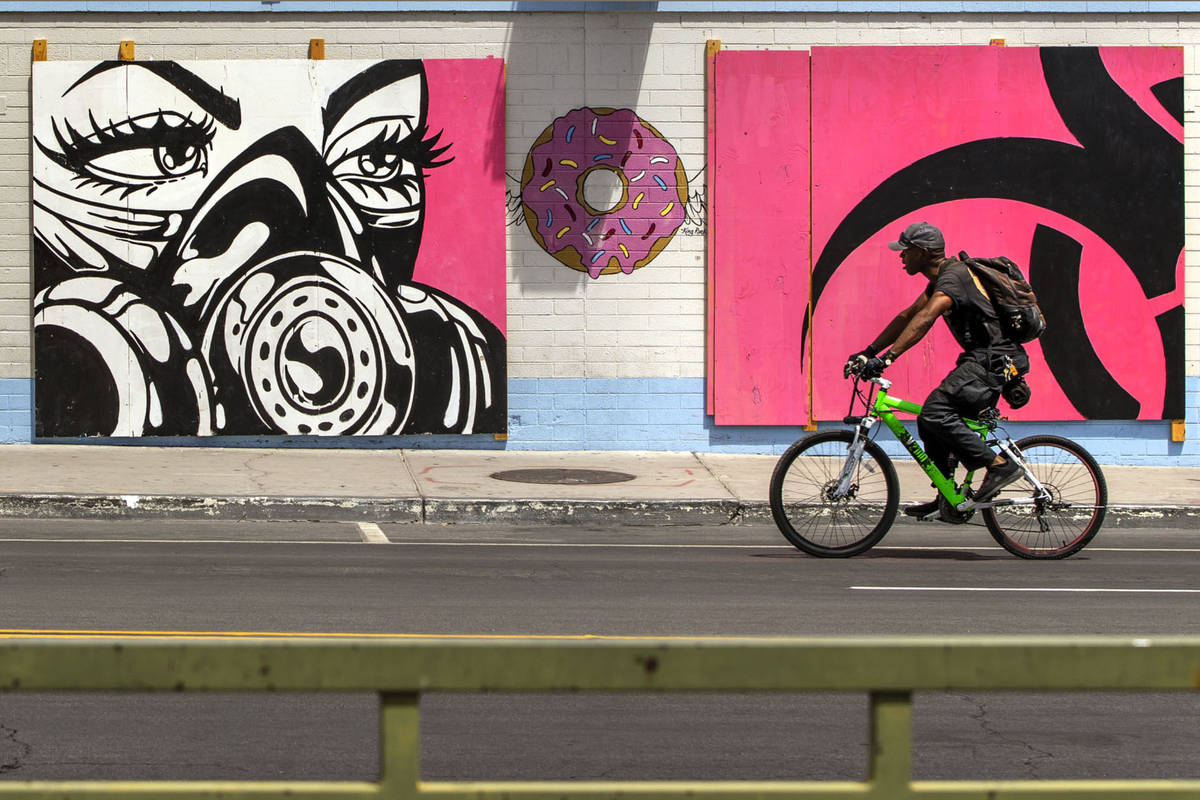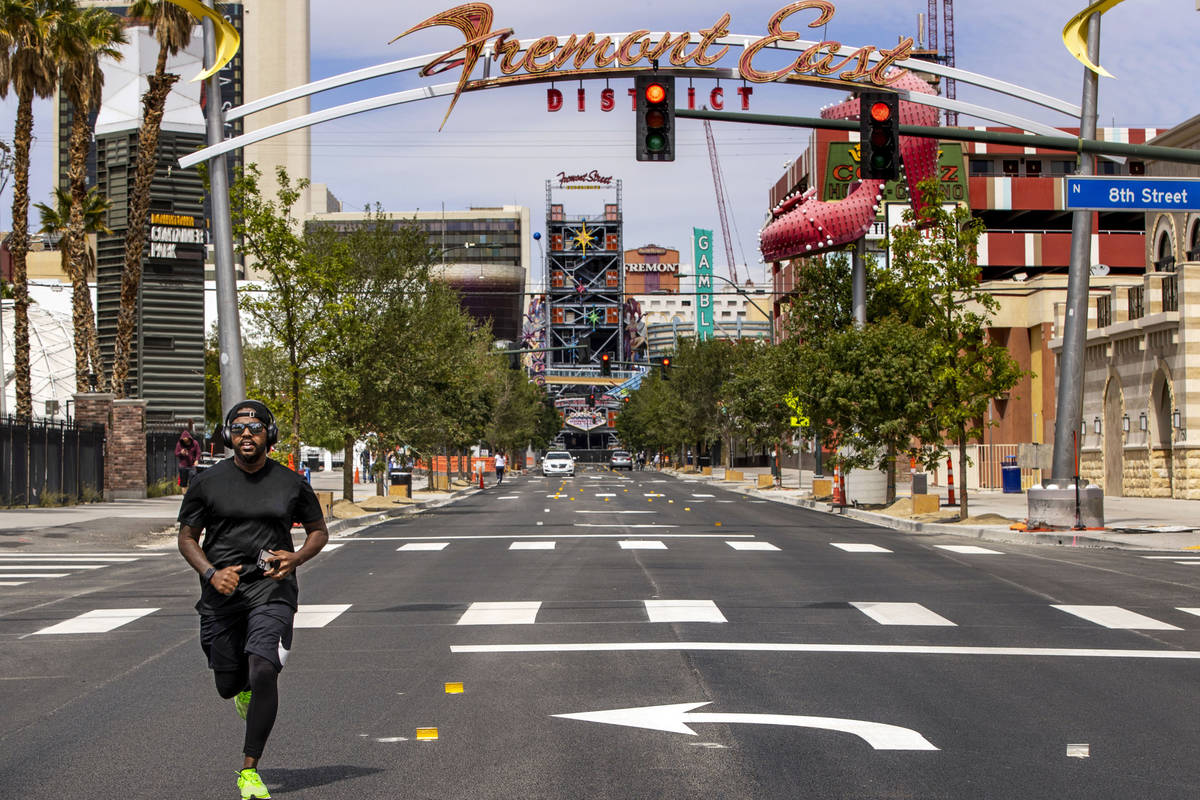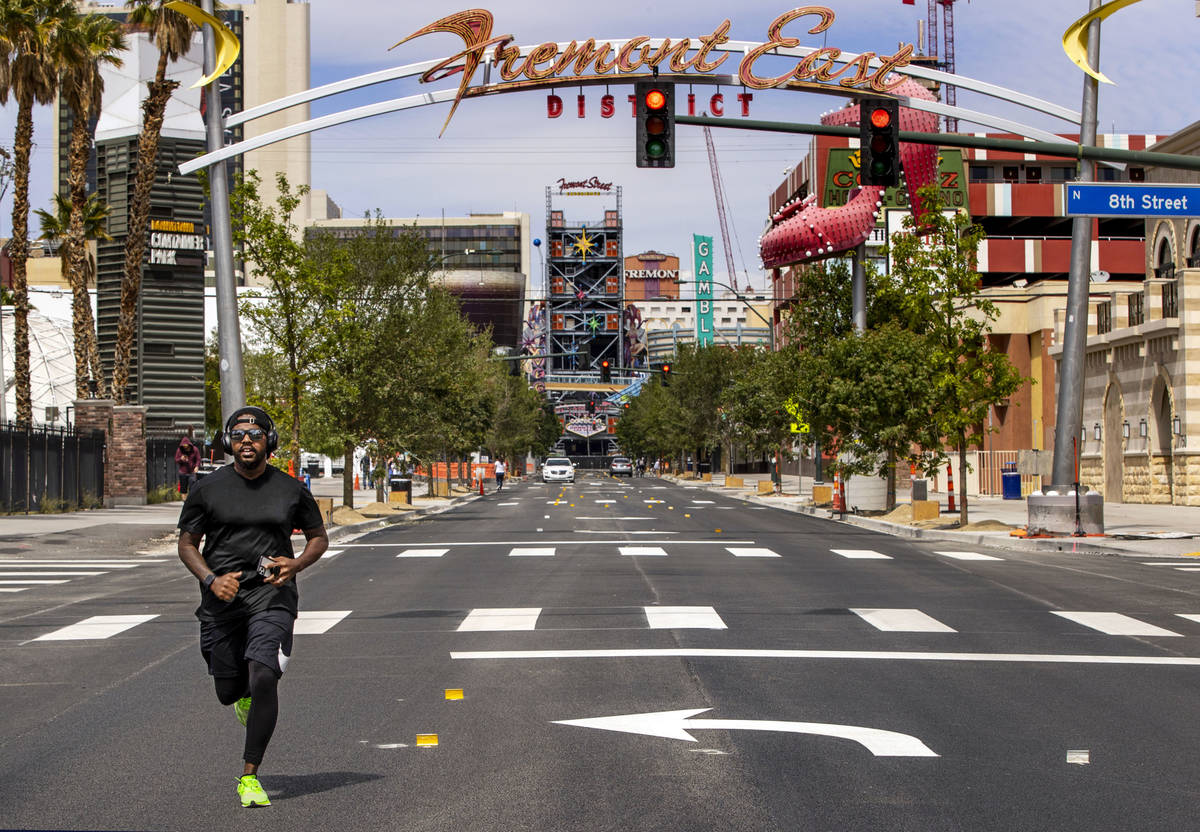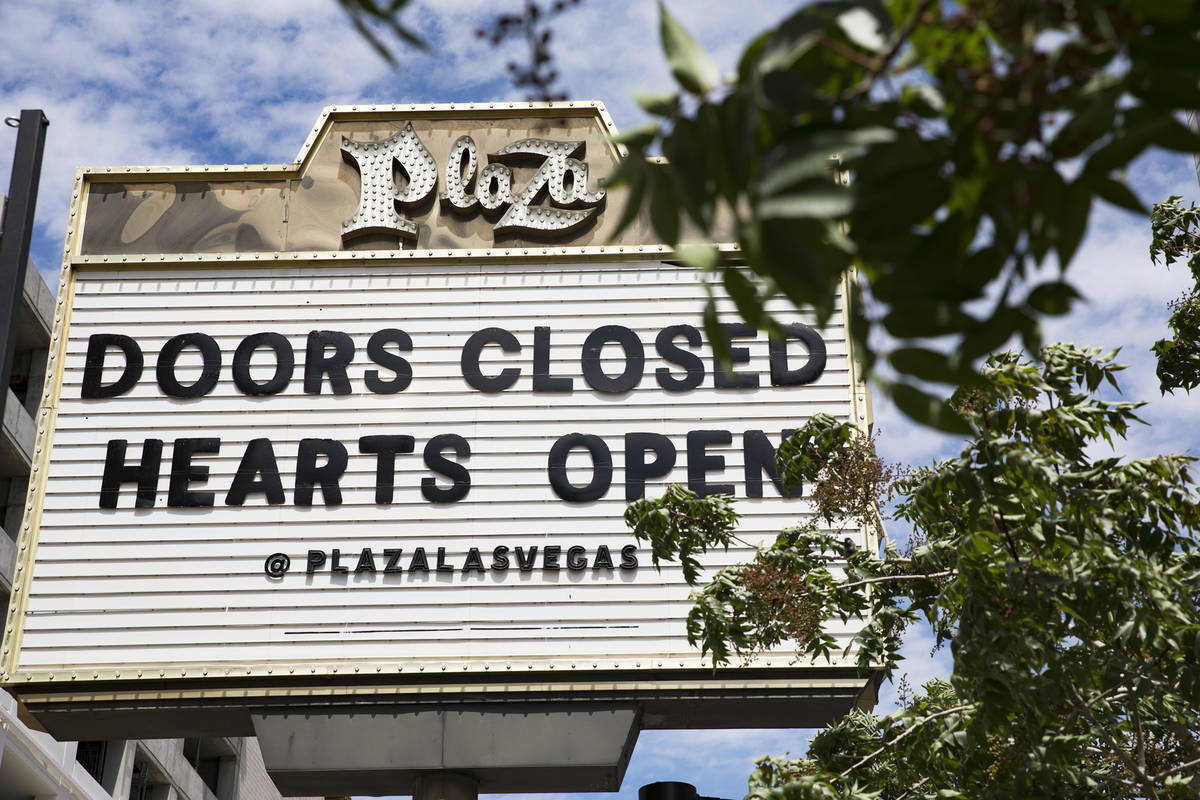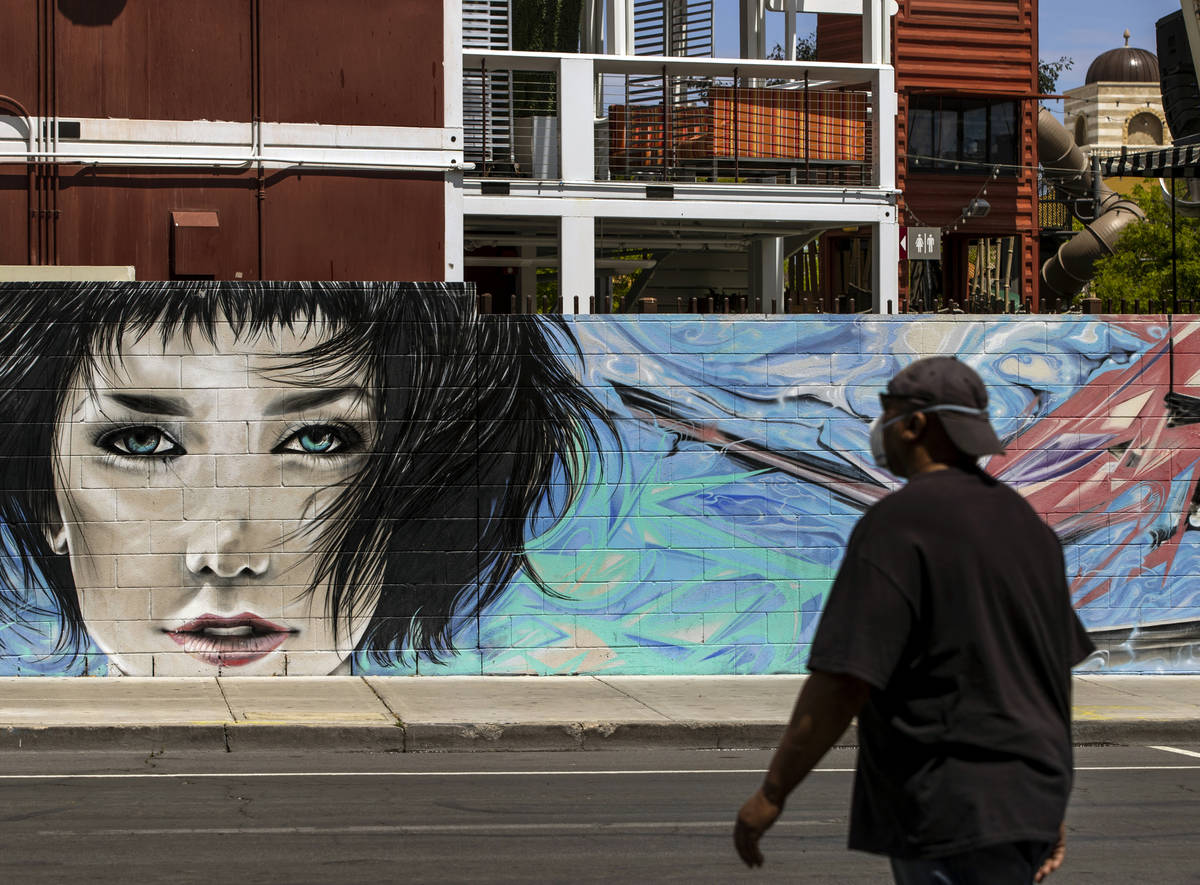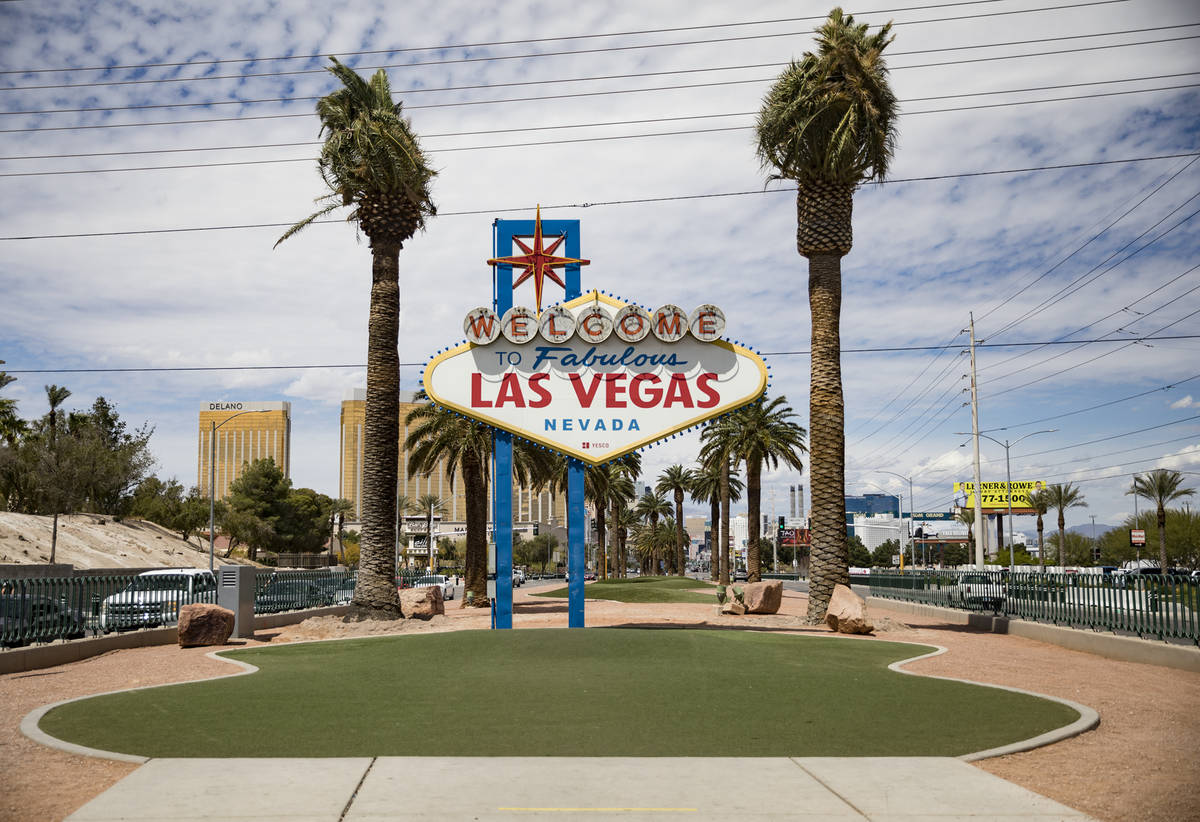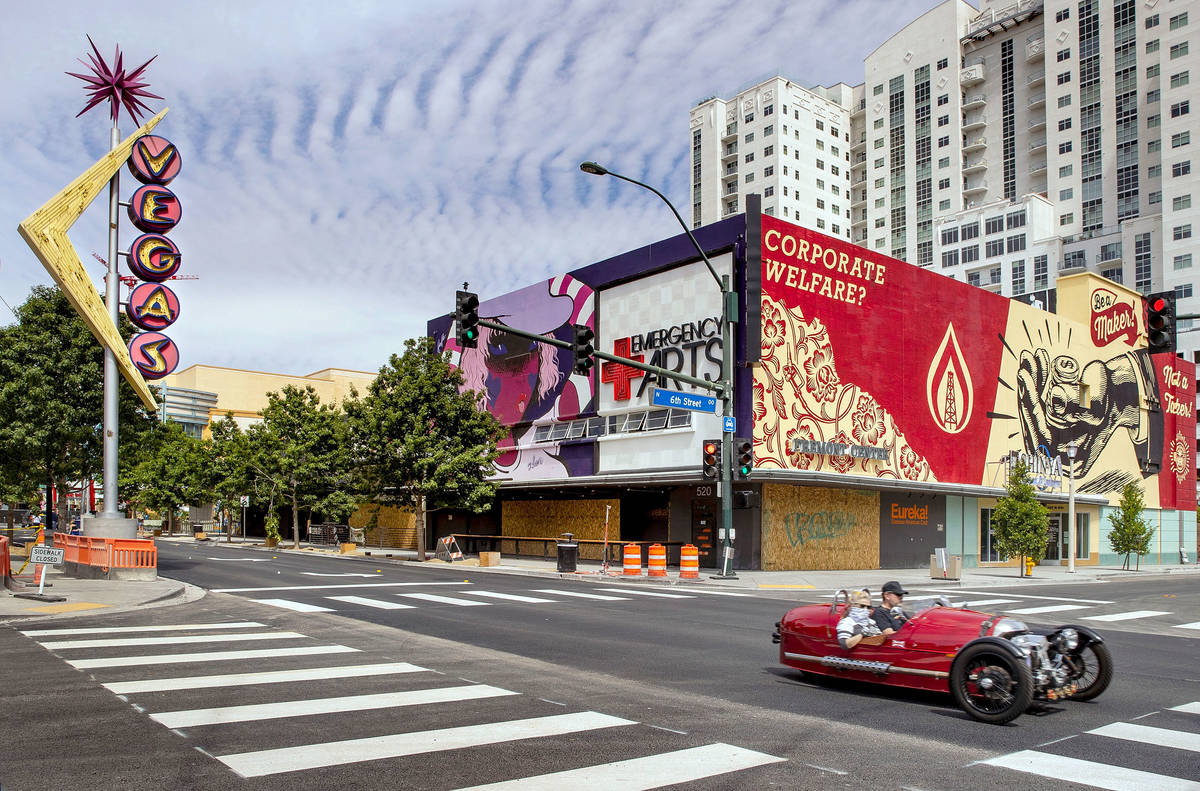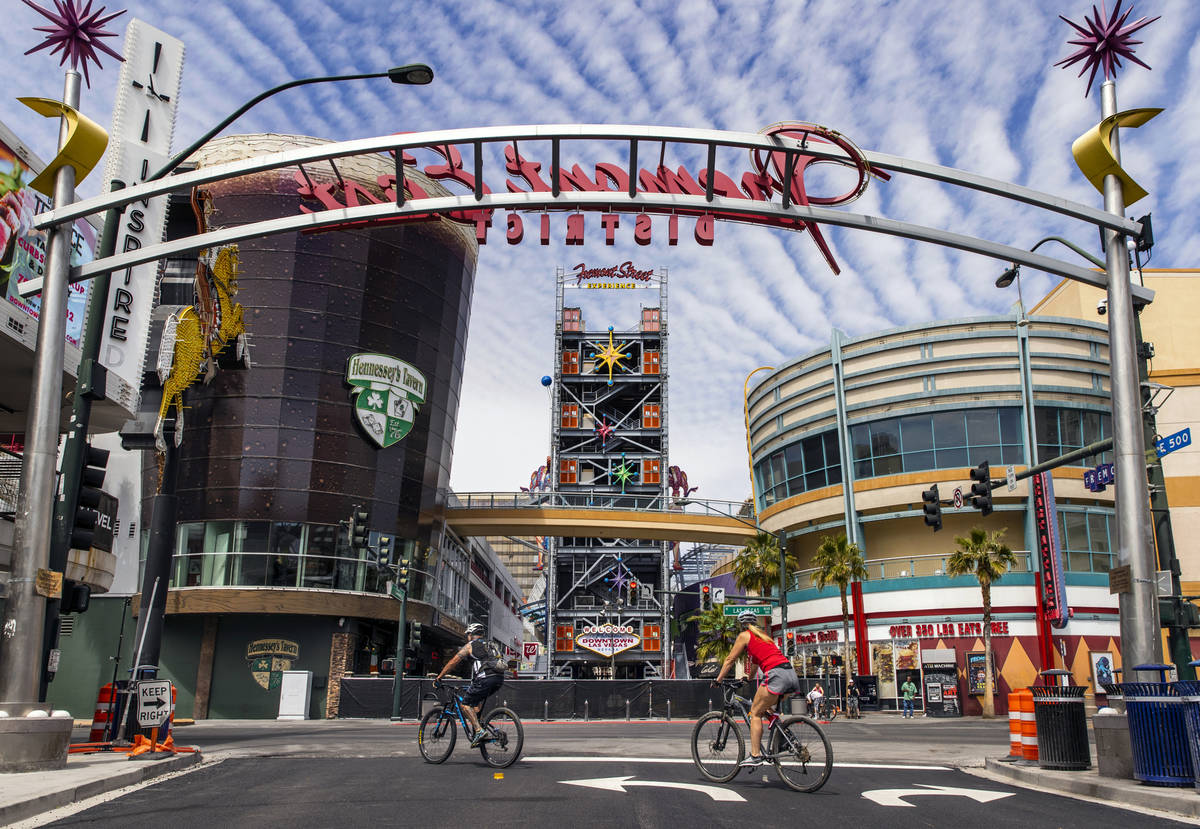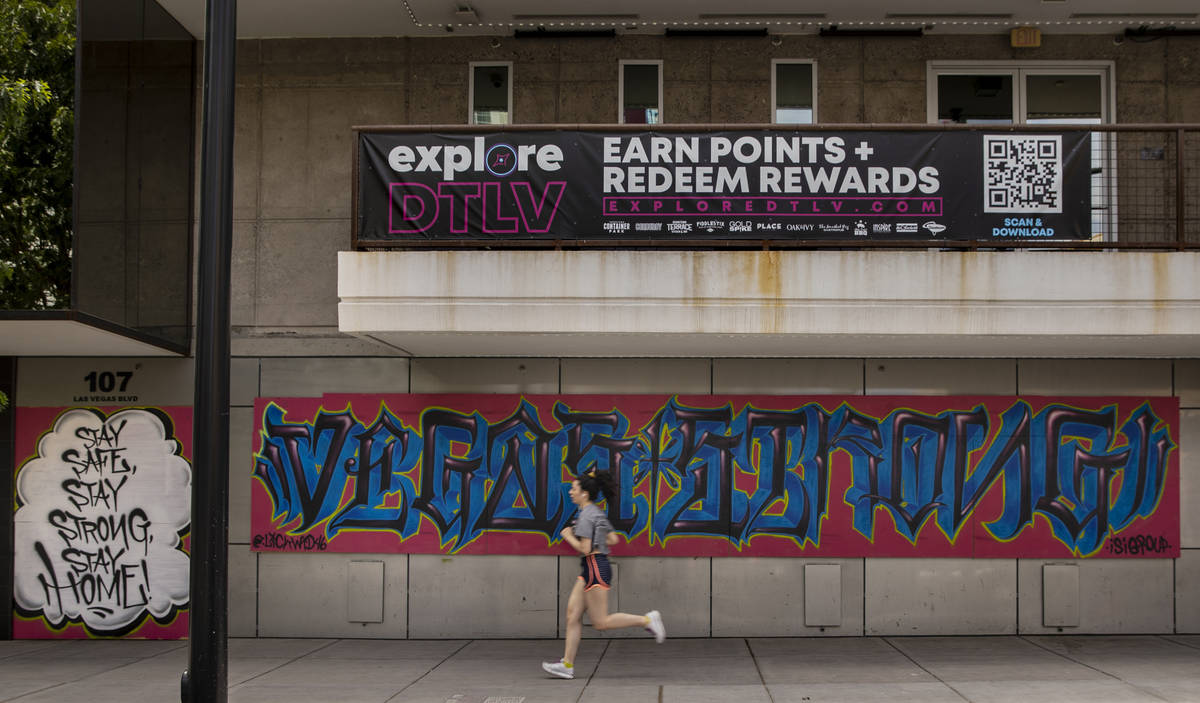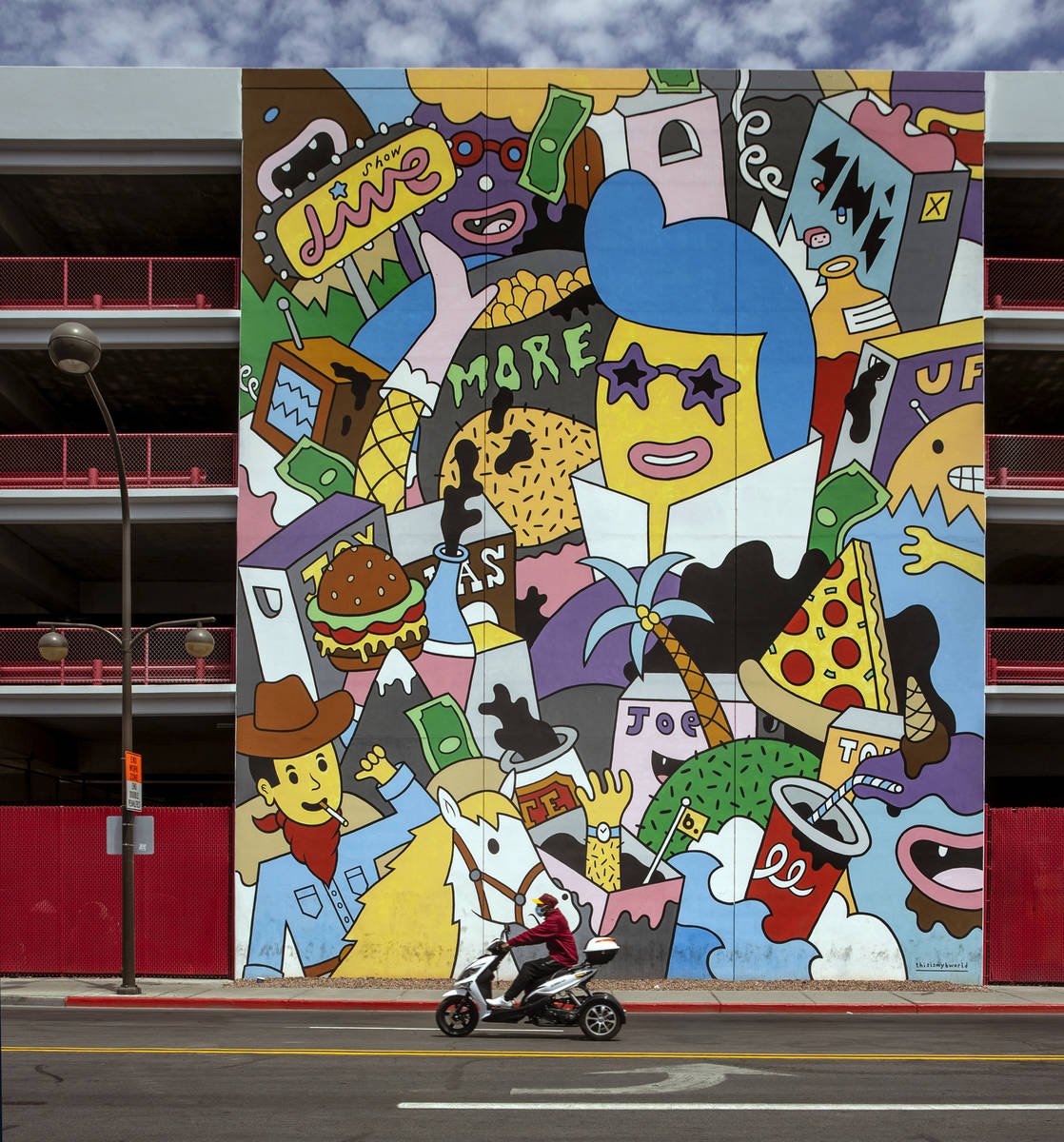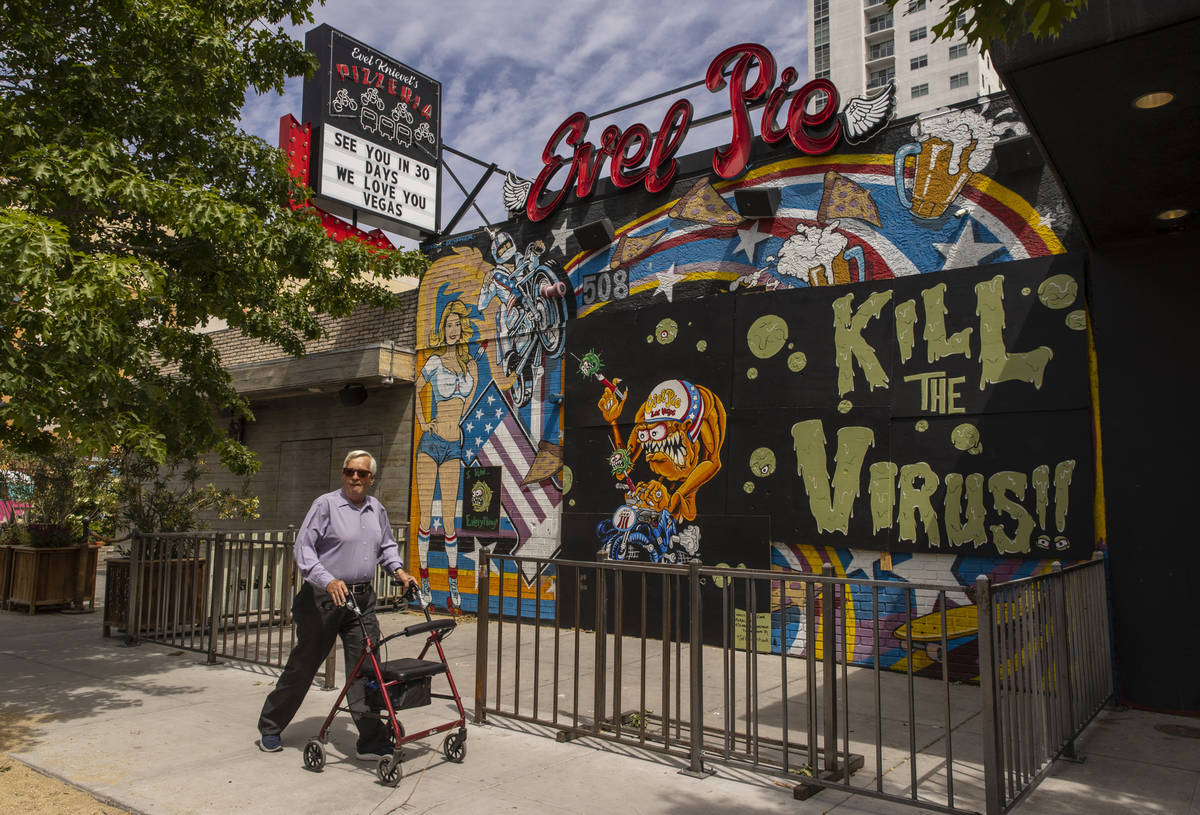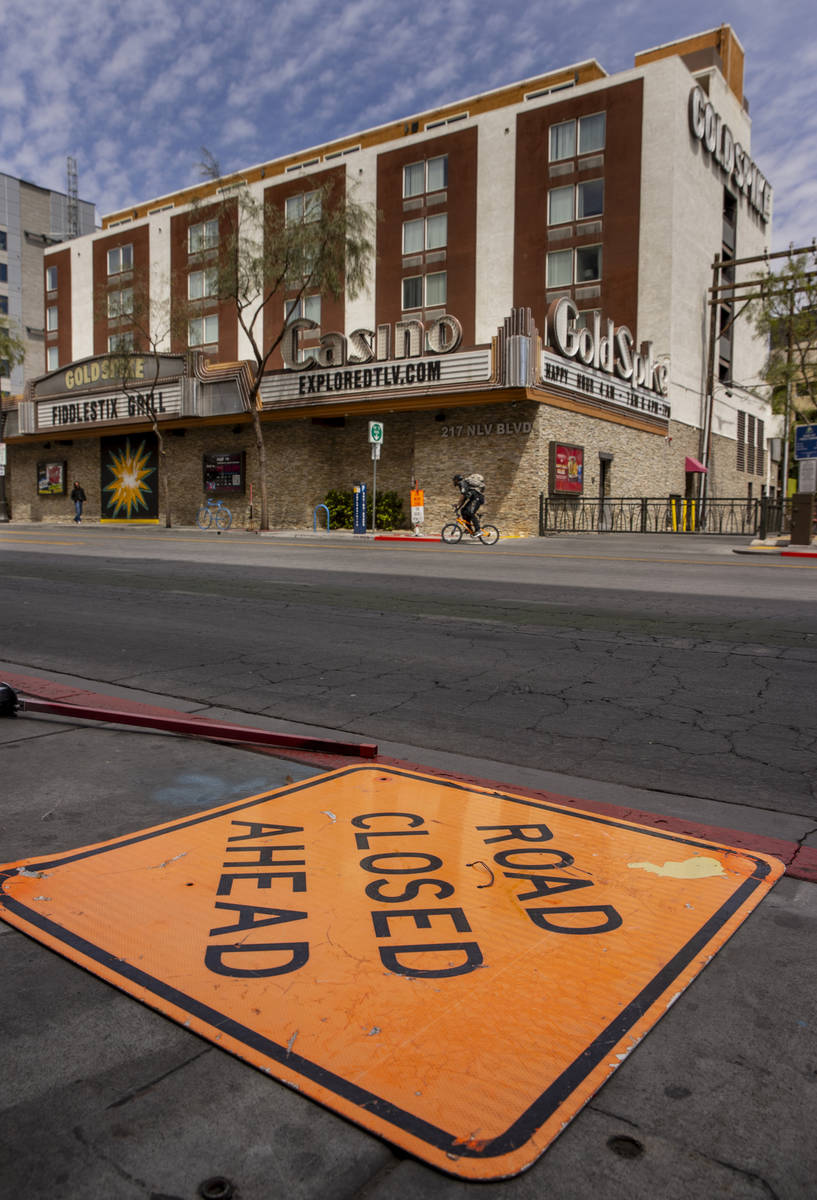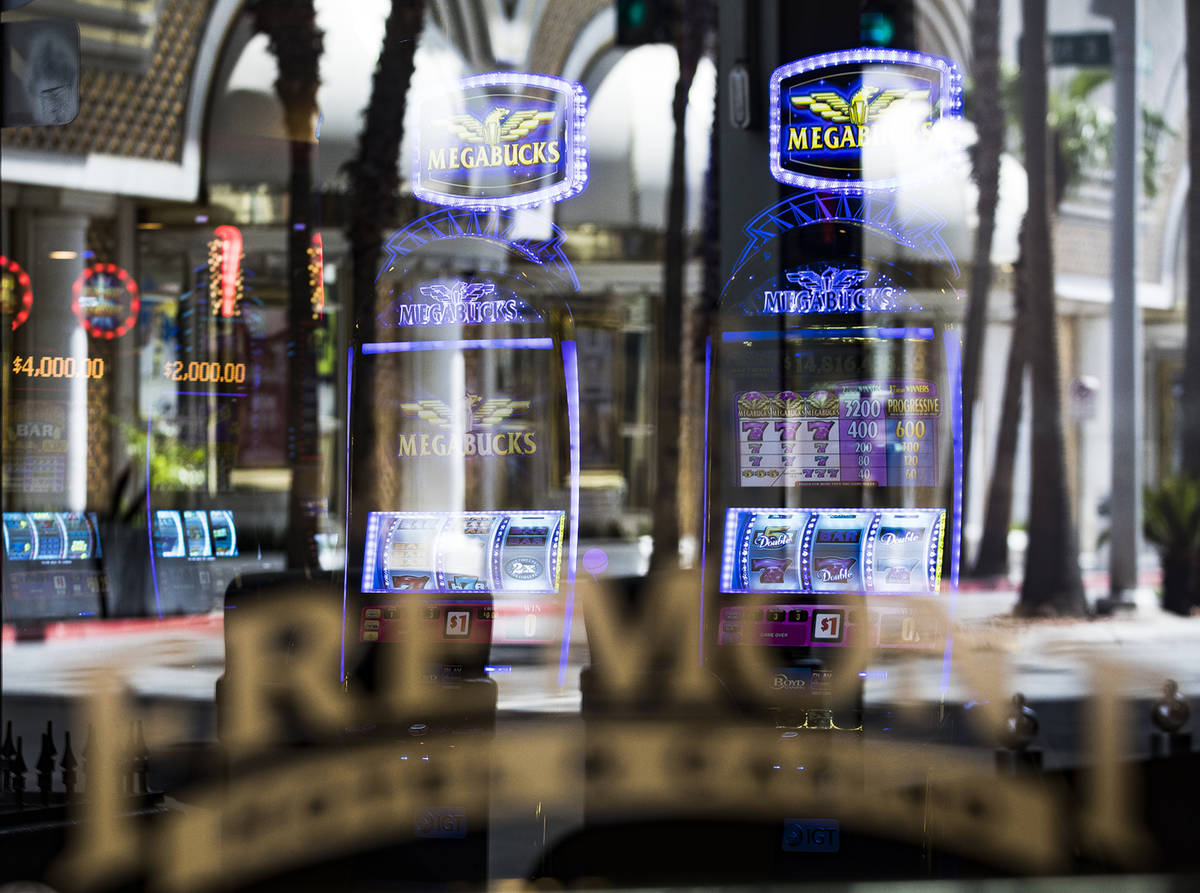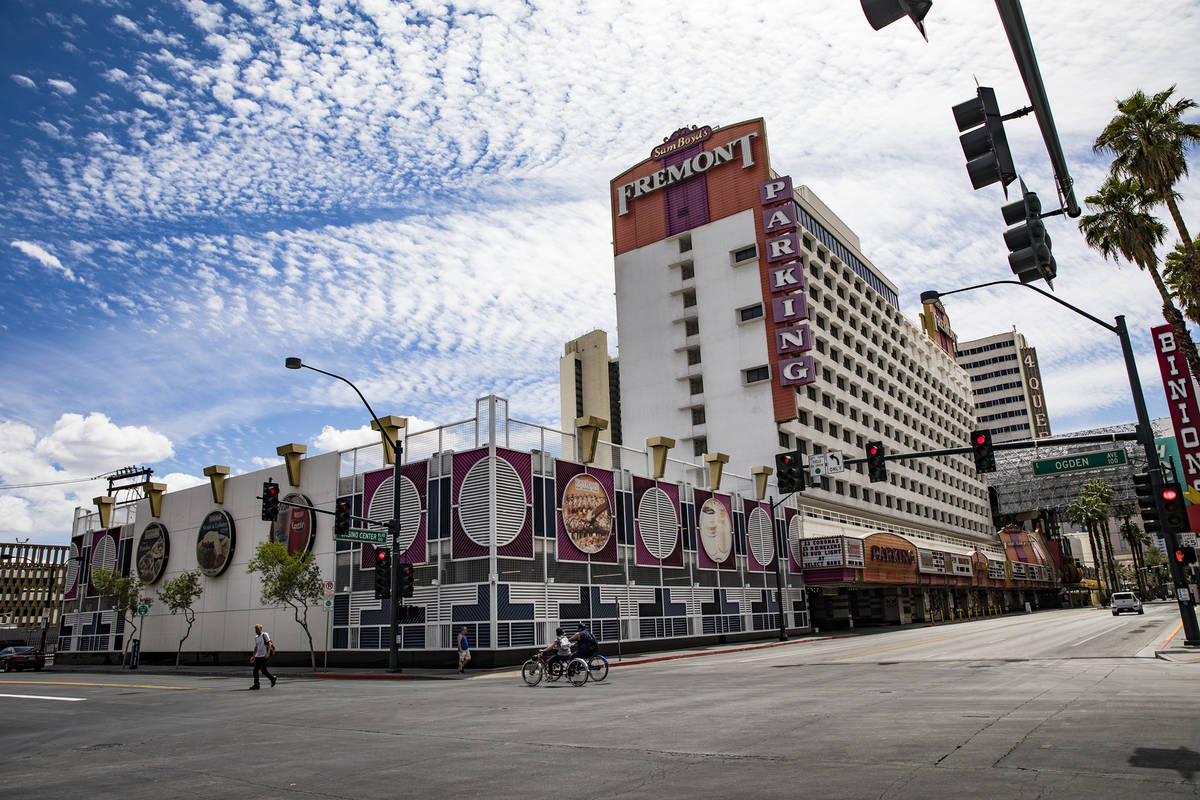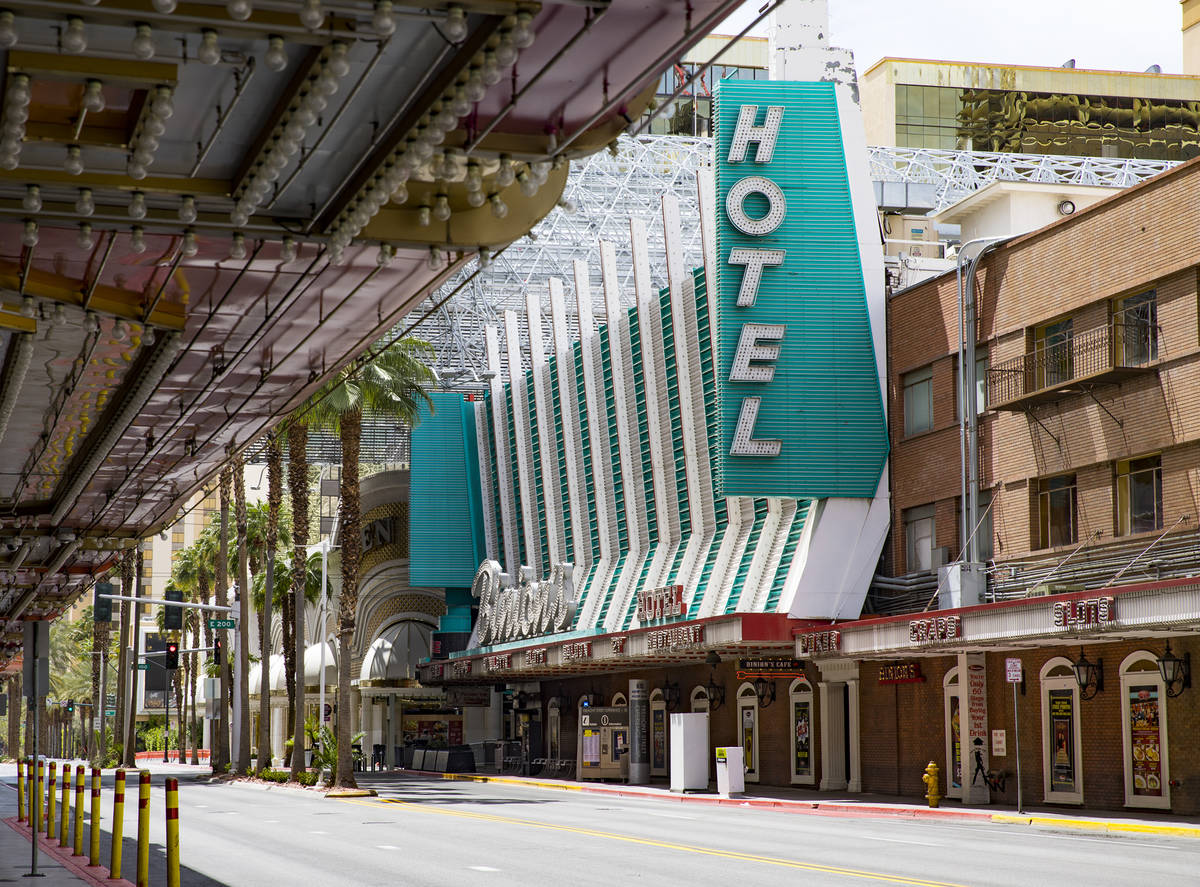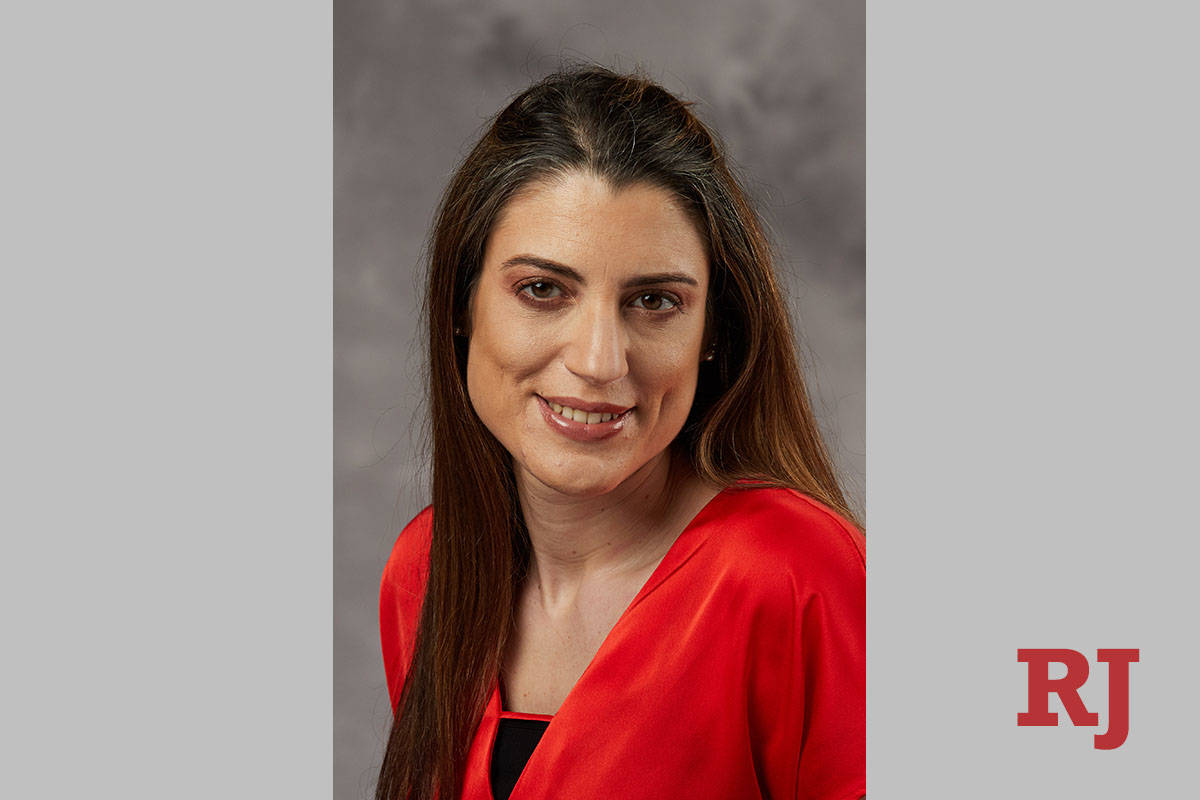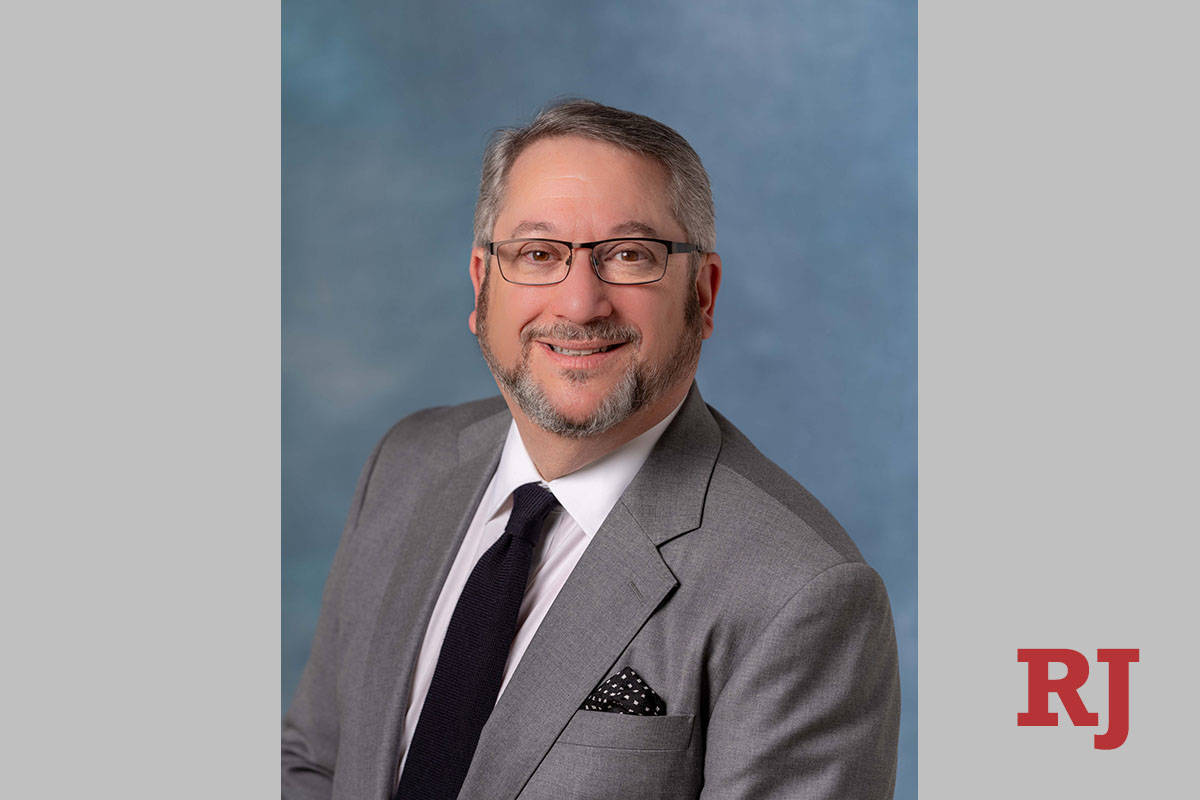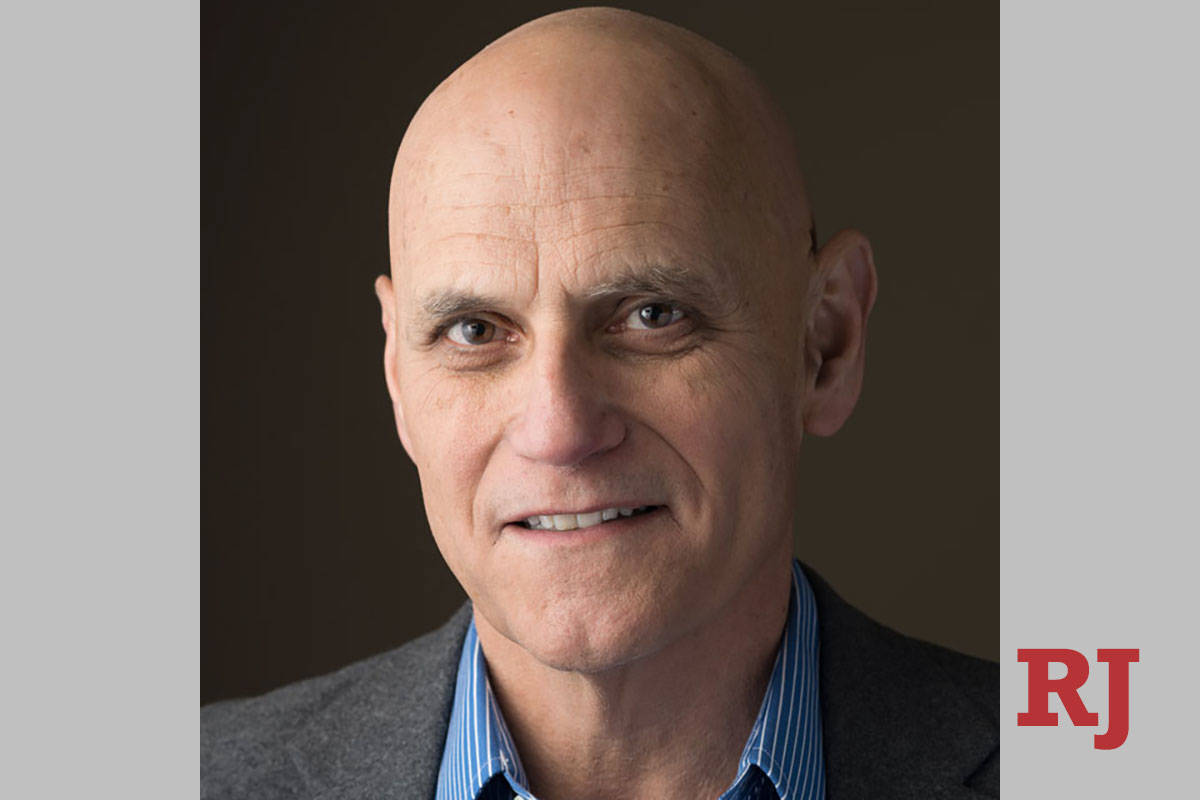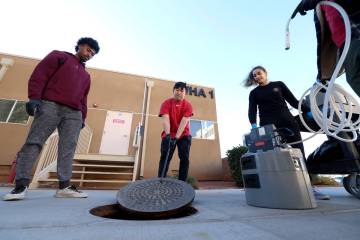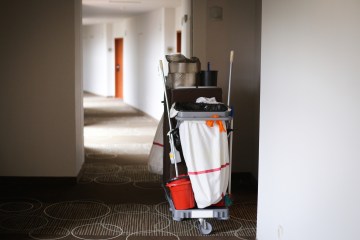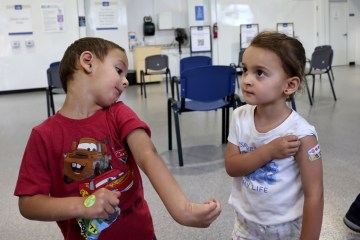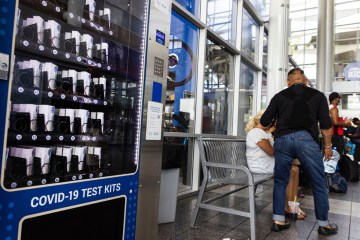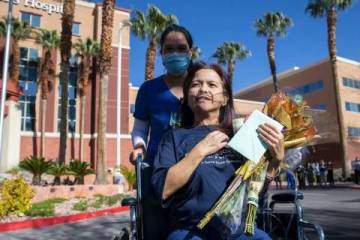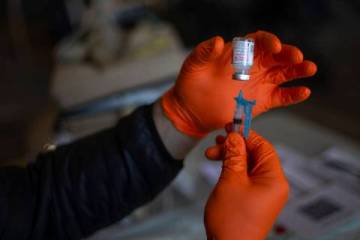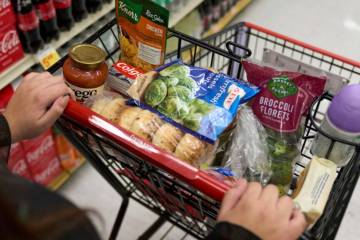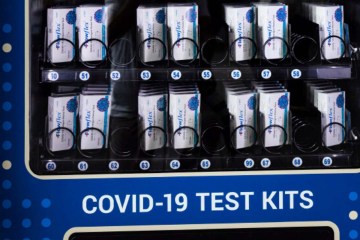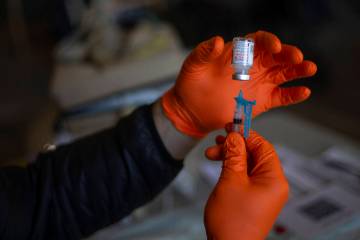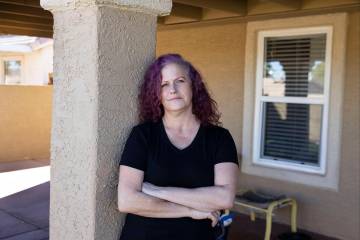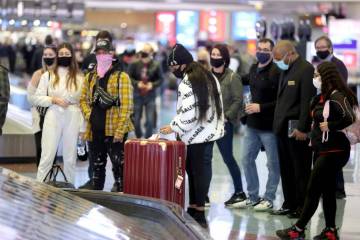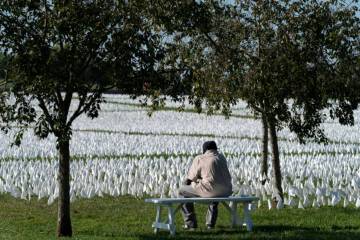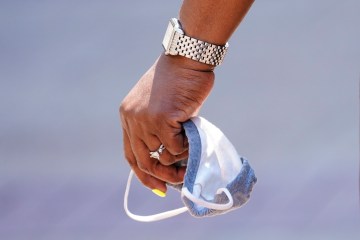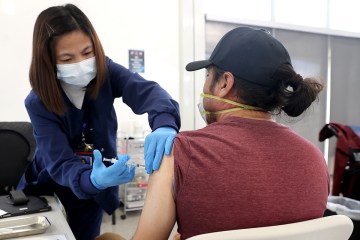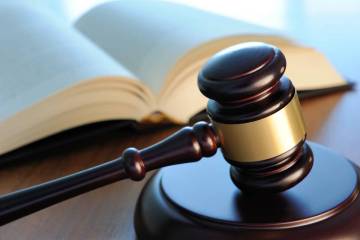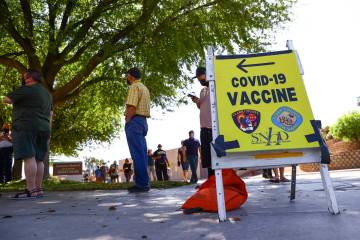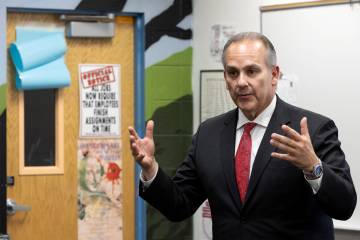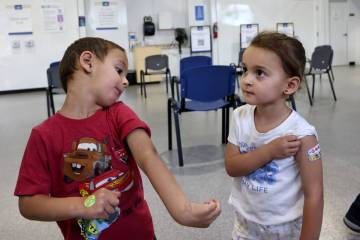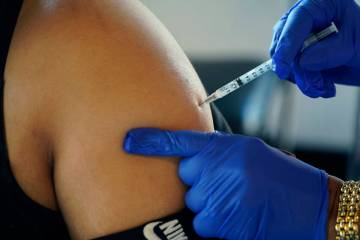Prepare for a long haul? Social distancing may not end for months
It’s been weeks since the pandemic quieted the world’s playground, snuffing out the symphony of boozy conversation, blaring car horns and slot-machine chimes that once filled the Las Vegas Strip.
Now, solo joggers pant past locked doors, skateboarders clunk over empty sidewalks and cars rev through desolate intersections. You can hear birds sing.
There is no magic way to restart the heart of Nevada’s tourism economy. Even if the shutdown is lifted and resorts are given a green light to take guests, “The notion of everything reopening at once is absolutely not going to happen,” Alan Feldman, distinguished fellow at UNLV’s International Gaming Institute, told the Las Vegas Review-Journal.
And even if it did, industry leaders aren’t banking on a flood of guests to flock to Las Vegas right now, or in the coming weeks, or months.
Researchers with Harvard’s school of public health modeling this week suggested “prolonged or intermittent social distancing may be necessary into 2022” to effectively halt COVID-19’s spread.
“I think all Nevadans need to realize that it’s going to be a long time to get back to what we had at the early part of this year — that ‘normal,’ ” Feldman said.
Steps to reopen
Nothing will reopen without approval from public health and state officials, and experts say that will not happen unless Nevada sees a consistent slowing of cases, coupled with widespread testing and the confidence that hospitals have the space and resources to handle ongoing treatment.
In a news conference Thursday, Gov. Steve Sisolak praised Nevadans for largely abiding by the state’s stay-at-home order. He also said that he is committed to seeing Nevada’s economy bounce back quickly.
“As soon as we finalize our state-specific plan to reopen, I will be right here, telling you exactly how we are going to do it,” he said.
Experts say that plan may involve new regulations, designed to ensure appropriate physical distancing at any reopened schools or businesses, including casino floors.
Ahead of the governor’s news conference, President Donald Trump on Thursday released to governors a new, three-phase approach to reopening the country. The White House this week also tapped a bipartisan group of lawmakers, including Sen. Jacky Rosen, D-Nev., to discuss how and when to revive the nation’s economy.
“Nevada is one of the states whose economy has been bit hardest by the coronavirus crisis,” Rosen said in a statement. “We must work together, not only to overcome the pandemic, but to plan for what comes next.”
In Europe — and even Italy, its coronavirus epicenter — countries began reopening businesses, schools and sports centers this week, testing whether it’s possible to crawl out of their holding patterns without igniting a second wave.
But in California, Los Angeles Mayor Eric Garcetti doubled down in the opposite direction, predicting in a high-level staff conference call this week that the city might ban large gatherings like concerts, sporting events or conventions for at least a year, according to the Los Angeles Times.
By comparison, Las Vegas Mayor Carolyn Goodman during a City Council meeting Wednesday called the state’s ongoing nonessential business shutdown “total insanity,” adding that “being closed is killing us already.”
When asked Thursday if she would consider a similar banning of large gatherings in Las Vegas, which does not include the Clark County resort corridor, Goodman told the Review-Journal, “No, no, no, no, no.”
“When I heard that, I thought, ‘Who do I call to get all those conventions?’ ” Goodman said. “We will take every one of them here.”
But it’s not that simple, experts say.
Lessons from flu pandemic
Take the flu pandemic of 1918, for example. Las Vegas was a 2,000-person railroad and mining town at the time, but it wasn’t spared. Forty people died, and the Nevada State Board of Health at the time recorded at least 4,000 cases.
As a precaution, Las Vegas banned public gatherings and ordered schools and businesses to shut down between October and December of that year. New ordinances required people to wear face masks in public.
But even in 1918, there was pressure to reopen, according to Peter Michel, director of special collections and archives with UNLV Libraries.
“Everybody thought it had passed because all the numbers had dropped, and had been dropping, so people were immediately thinking it was over,” Michel said.
Before Christmas, local officials bowed to the pressure. Schools welcomed back students, and churches opened for worship.
“And what you saw were sporadic outbreaks,” he said, triggering a second shutdown.
It lasted through at least February, when the flu in Las Vegas truly began to subside.
“Now, you see sort of similar things — people resisting, people defying; pressure to reopen, pressure to return to normal,” Michel said. “And the lesson of 1918 is, you don’t want to do it too early. It may be dormant, but it will come back.”
No sprinting forward
With an economy like Las Vegas’, there is no sprinting forward, said Marta Soligo, a UNLV doctoral candidate who is studying the effects of COVID-19 on tourism.
“Tourism is really a system,” Soligo said. “When we talk about tourism, we don’t just talk about hotels or museums. We are talking about transportation, other industries. There’s a sort of interdependence on subjects.”
At this stage, there is no way to know how long it will take to regain a sense of normalcy, Soligo said. That’s because Las Vegas is still in “Phase 1” of its combined health, financial and social crisis.
“When we get to Phase 2, I think the staggering of openings will be the key,” she said. “The risk is to go back to Phase 1 if you don’t manage it well.”
Feldman, with the International Gaming Institute, said that seems to be the understanding among gaming giants.
“If they do have multiple properties, they aren’t going to open all of them all at the same time,” Feldman said. “There just won’t be business to do it.”
Openings within each individual property also are likely to be staggered: fast-service restaurants before buffets; spaced-out slot machines before traditional table games.
Showrooms and arenas could come later. The National Hockey League season is on an indefinite pause right now, so the Golden Knights are not expected to play soon anyway.
And convention centers, which require mass bookings, are probably a ways off.
“This is multidimensional chess at its finest,” he said.
Effects on mental health
On a personal level, this means thousands could remain out of work, struggling with bills for an indefinite period of time.
That, combined with being stuck inside with little to no social contact, can lead to mental health problems like anxiety, depression and post-traumatic stress disorder, according to Steven Hayes, a psychology professor at the University of Nevada, Reno.
The longer this lasts, the more those struggles can grow, which can lead to insomnia, fear, irritability, poor concentration and detachment from others, Hayes said.
Information helps. People need consistent, accurate and understandable information about how long this will go on, and why, and what to do, he said.
Maintaining a healthy schedule helps. Hayes suggested establishing a routine that includes exercise, self-care, work (if possible), household chores, playtime with children and phone calls or video calls with loved ones.
“This is not the time to be on the couch 24/7,” Hayes said.
Finding a personal, values-based reason for why you are distancing also helps. For example, it is far better to socially distance yourself to protect the health of others than distancing because you “have to,” Hayes said.
Adequate supplies help. It is challenging enough to distance yourself for weeks or months. Doing so while worrying about what you have on hand, and what you’re running out of, is much harder.
Some of that, a person can do, but some of that, Hayes said, is up to friends, family, charities or the government. Work together to make sure those in your network have what they need, he advised.
Psychological flexibility also helps. People get through crises better mentally if they develop more emotional and cognitive openness, or “mindfulness,” and learn how to focus on the present moment and let go of the “small stuff,” Hayes said.
“Diminished psychological flexibility is a scientifically established predictor of long-term trauma and mental health problems following such crises as devastating storms, school shootings, violent crime or sexual abuse,” he said.
The level of parents’ psychological flexibility can also predict whether children will be traumatized.
“Do remember that one altruistic reason to get this right is that our kids are watching and learning,” Hayes said.
Contact Rachel Crosby at rcrosby@reviewjournal.com or 702-477-3801. Follow @rachelacrosby on Twitter.



